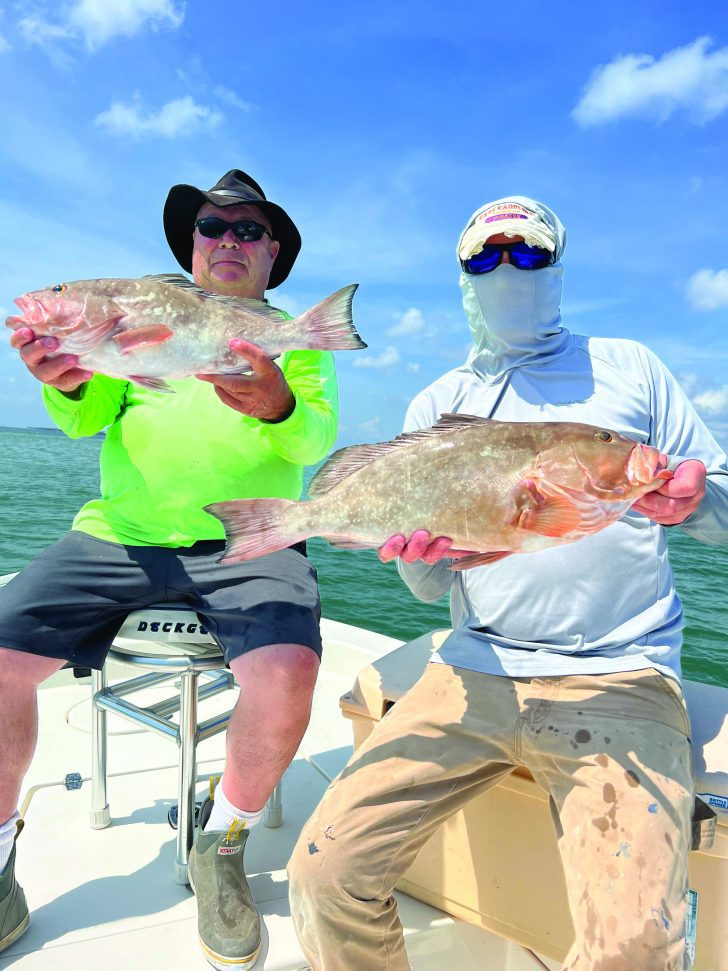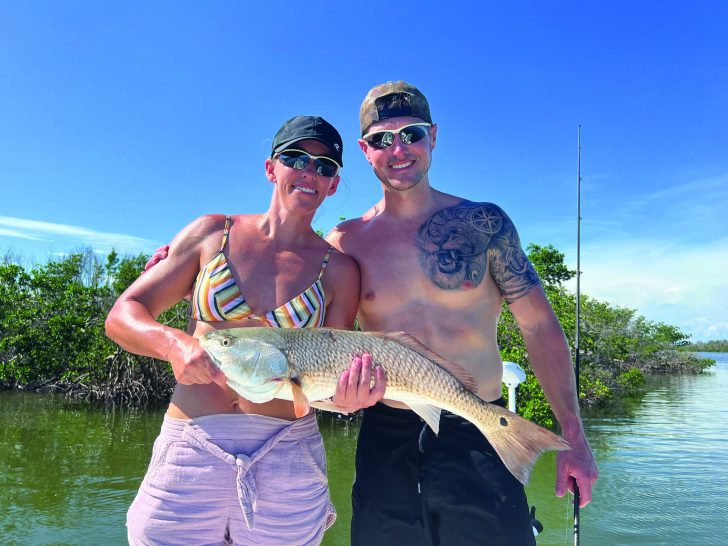By: Capt. Terry Fisher

My recommendation for inshore fishing is to fish in the mornings, as the air heat and water temperatures will not be as torrid. The only suggestions I have for offshore is go early on a calm day and depending on the species and size, go far and deep for the larger grouper and snappers. August will provide lots of opportunity for catching redfish around the mangrove islands and oyster beds. Over the past three years, FWC and Coastal Conservation released thousands of redfish fingerlings in Charlotte and Lee Counties. Other anglers and I have been the beneficiaries of those efforts! The great thing about the summer months is that water levels (tides) are very high throughout most of the days every other week during August. The redfish will migrate toward mangroves and oyster bars on incoming tides to feast on the small shrimp, crab and other morsels during the higher water levels. Snook and mangrove snappers will be lurking around as well. I recommend that anglers take advantage of the higher tides and stronger currents to catch fish. Fish with crabs, shrimps, ladyfish, pinfish and pilchards.
The best bet for snook, will more than likely be found off the beaches, under docks and around the passes of Boca Grande, Cayo Costa, North Captive and Sanibel Islands. These fish will be in both troughs depending on low or high tides. On high tides, they will be cruising and eating closer to the beach and seawalls. Conversely, on the low tide they will be in the secondary trough. Their favorite live bait will likely be pilchards, although they like live ladyfish and pinfish.
Seatrouts are the easiest fish to catch. There are lots of them in the grass flats from 3-6 ft. of water. Their favorite live baits are shrimp, but they can be easily caught on artificial presentations. I prefer live baits with my charter clients under a cork with a leader and hook just long enough to suspend the bait about the Turtle Grass. Mangrove Snappers and Sheepshead are mostly found around some sort of structure such as, docks, rocks, bridge pilings and mangrove trees. Small bait hooks with shrimp will do the job.
If you head offshore, lots of summer storms will spoil and curtail trips if not planned around them. There are a lot of small fish such as grunts, grouper, and snappers throughout our region within 10 miles. Lots of action and fun on calm days. However, to get to the bigger fish, anglers need to plan to fish farther out due to water temperature in the gulf being so high. Thirty to forty miles will provide 85-120ft. depths and if the bottom structure is good the bigger lanes, greys (mangrove snapper), yellowtail and grouper will be caught. A lot of marked reefs and wrecks are within this range for some good action, but they do get a lot of fishing pressure. Anglers looking for even bigger fish like the american red snapper, dolphin, tuna, black and gag groupers will likely find them 50-70 miles out in 140-170ft. of water.
I suggest that anglers with doubts or little experience should consider doing what I have done over the years and that is to continue to:
1) Read articles and fishing magazines, as you’re doing now, to get overall and specific advice on what works and when it works for others, then try it.
2) Go out with a buddy/friend that you know is somewhat or very successful at locating and catching fish.
3) Better yet: Hire a guide, that’s what I did and still do, who is willing to share locations and techniques that will ensure your success with finding and catching fish. I recall my earlier days in Florida, Cayman Islands, Bahamas and Belize, whereby I made a point to fish with the best fishermen in those areas. I watched and learned what they did, then combined their knowledges along with my efforts to be the best that I could be!
4) Do what you know that has works for you.
5) Commit and experiment on a limited basis during each trip to see if new offerings and techniques work out.

